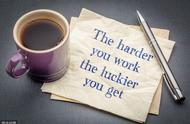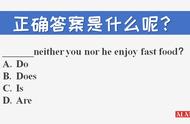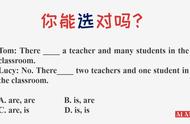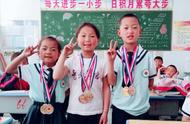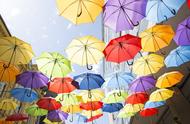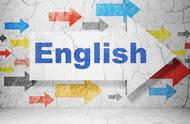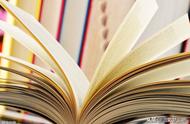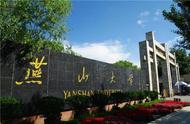There be句型
→ “There be 某人/物 (在)某地”→ 表示“(在)某地 有 某人/物”
→ be 有am, is, are,was were等形式。

备注:
1、There be 句型中,be动词的形式要遵循就近原则:即由最靠近be的名词决定。
There is a map,a computer and some books on the desk.
书桌上有一幅地图、一台电脑和一些书。
There are two bedrooms and a small study on the second floor.
二楼有两间卧室和一间小书房。
There is some water in the bottle.瓶子里有些水。
2、There be 句型的否定句,直接在be后加上not;
一般疑问句,把be放在句首,肯定回答:
Yes,there is/are是的,有。否定回答:No, there isn’t/ aren’t不,没有。
特别是:在肯定句变为否定句和疑问句时,some“一些”应该转变为any。
3、There be句型的特殊疑问句:
1)对名词前的数量词提问,常用how many/much(多少)来提问。如果是不可数名词
则用how much;如果是可数名词,不管是单数还是复数都用how many。
There is some milk in the bottle.
→ How much milk is there in the bottle?
There are ten cars behind the house.
→How many cars are there behind the house?
There is one/a car behind the house.
→How many cars are there behind the house?
2)对名词(包括名词前的数量词)提问,
用“What’s (What is) 地点介词短语?”。
-----There are five eggs and two apples on the desk.
(在)桌上有五个鸡蛋和两个苹果。
-----What’s on the desk? (在)桌上有什么?
------There is some water in the bottle.(在)瓶子里有些水。
------What's in the bottle? (在)瓶子里有什么?
特别注意:在问的时候,be只能用is;而回答时则看实际情况而选用is或are。
-----What’s on the desk? (在)桌上有什么?
------There are five eggs and two apples on the desk.
(在)桌上有五个鸡蛋和两个苹果。
----- What’s in front of the yard?(在)院子前面有什么?
------There is a road in front of the yard.(在)院子前面有一条路。
3)“What’s (What is) 地点的介词短语?” 常用There be句型来回答:
-----What’s on the desk? (在)桌上有什么?
------There are five eggs and two apples on the desk.
(在)桌上有五个鸡蛋和两个苹果。
----- What’s in front of the yard?(在)院子前面有什么?
------There is a road in front of the yard.(在)院子前面有一条路。
4、There be 句型中,表示地点的介词短语一般放在句末,但有时也可以放在
句首,这样是为了强调状语或是为了上下文的衔接。
There is a big tree in front of the classroom.
在教室前面有一棵大树。
=In front of the classroom(,)there is a big tree.
5、There be 句型中,there是引导词,本身没有实际意义,其主语是be动词后
面的名词,而且充当主语的名词前常常有表示数量的限定词来修饰,如a/an ,two ,four,some , any,much ,many, a lot of等。
There is a bank on the street corner.在街角有家银行。
There are two apartment buildings near my house.在我家附近有两幢公寓楼。
但名词前一般不用形容词性物主代词(my,his,your,their,her,our...)或名词所有格(‘s)修饰。如果名词前有这些修饰时,常用“人/物 be 地点介词短语”。
错误:There is my book on the desk. There are Tom’s books on the shelf.
正确:My book is on the desk. Tom’s books are on the shelf.
6、There be 结构与have的区别:
There be 常用来表示“在某地 有 某人/物/事”,表示客观上的存在,不说明所有关系。而have/has“有”,表示所属关系,即“所有,占有”。
There are many trees in our school.我们学校有许多树。
There are fifty students in our class,我们班级有50个学生。
They have a lot of money.她们很有钱。
The woman has five children.这位妇女有五个孩子。
7、There be sb. doing sth (在)某地 → (在)某地有某人正在做某事
Look! There are many boys running on the playground.
看!操场上有许多男生正在跑步。
There are some old people living here.一些老人正住在这里。
8、There is /was something wrong with her eyes.她的眼睛出问题了(病了)。
There is /was something wrong with his bike.他的自行车出问题了。
There is /was nothing serious with .............
9、There be 句型也可用于“There be 某事/物 (在)某时”
→表示“(在)某时 有 某事/物”
There is some homework on Sundays. (在)星期日有些家庭作业。
10、There be 句型中一般将来时态的应用。
基本结构:There will be ...
=There is / are going to be ... →意为“将会有....”
There is going to be a football game tomorrow afternoon.
明天下午将会有一场足球赛。
=There will be a football game tomorrow afternoon.
There are going to be two meetings this afternoon.
今天下午将会有两场会议。
=There will be two meetings this afternoon.
备注:there be 句型不能与have/has 同时存在一个简单句中。
误:There is going to have a football match this afternoon.
正:There is going to be a football match this afternoon
